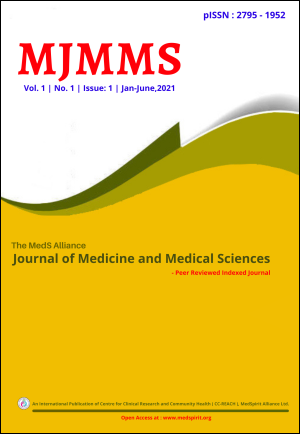Self-medication Practice in Primary Dysmenorrhea among Nursing Students: A Cross Sectional Study
DOI:
https://doi.org/10.3126/mjmms.v1i1.42951Keywords:
Self-medications, primary dysmenorrhea, nursing studentsAbstract
INTRODUCTION: Self-medication and home remedies are most commonly employed for relief from menstrual discomfort in female students. Self-medication practice varies among adolescent female students. Hence, this study aims to observe and analyze self-medication practice and drugs used for primary dysmenorrhea among nursing students.
MATERIALS AND METHODS: This cross sectional study was conducted at Janaki Medical College and College of Nursing, Sinha Health Foundation, Dhanusha from October 2019 to December 2019, among nursing students of various academic years of intermediate level and bachelor level through structured questionnaire. Data analysis was carried out using SPSS version 21.0.
RESULTS: Out of 156 female students, the mean age of menarche was 13.20±1.53, interval of menstrual cycle was 30.29±7.26. Majority (82.1%) of the female students reported lower abdominal pain during menstrual bleeding, of which 48.4% had pain for less than 1 day, 47.7% had pain for 1-3 days and 3.9% had pain for more than 3 days. Self-medication practice was observed in 35.20 % of students while 60.20% of them practiced resting in bed for pain relief during menstrual bleeding. The most commonly self-medicated drug was mefenamic acid (64.4%), followed by paracetamol (40%), ibuprofen (26.7%) and nimesulide (13.3%).
CONCLUSIONS: Self–medication of drugs was found to be lower in primary dysmenorrhea among nursing students. Therefore, education programs on the drawbacks of self-medication of drugs needs to be implemented; properly and timely.
Downloads
Downloads
Published
How to Cite
Issue
Section
License
Copyright (c) 2021 Lokeshwar Chaurasia, Laxmi Shah, Gita Paudel, Deependra Prasad Sarraf, Poonam Shah, Jitendra Kumar Singh

This work is licensed under a Creative Commons Attribution-NonCommercial 4.0 International License.




